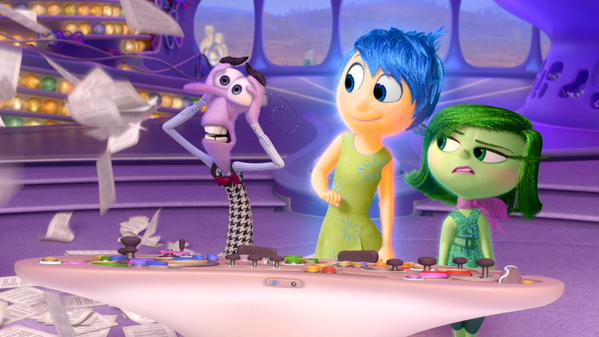Why 'Inside Out' Is So Important

That is, until Pixar came into the game. As many have acknowledged, Pixar goes beyond the typical storyline of animated feature films. We’ve seen it with “Toy Story,” “Monsters Inc.,” “Finding Nemo,” “Up” and many more. There might still be talking creatures and the same basic arc, but Pixar creates movies that hit more than just our funny bones. Perhaps that’s what makes Pixar well, Pixar.
READ MORE: Film Review: 'Fan Girl'
There have been more than enough articles of Disney/Pixar conspiracy theories and plenty of have taken to find the deeper meanings or loopholes in these films, because there always seems to be one. Yet with “Inside Out,” viewers of all ages should have no trouble uncovering the themes throughout the film.
Pixar’s latest feature film is loosely about a Midwestern preteen girl whose family abruptly moves to San Francisco and her experiences of starting a new life. The real stars are the girl’s personified emotions, Joy (Amy Poehler), Sadness (Phyllis Smith), Disgust (Mindy Kaling), Worry (Bill Hader) and Anger (Lewis Black). While these might be basic emotions, the film unfolds to prove emotions are much more complex than they appear to be. We watch the confusing emotions that come with adolescence; in particular, we get a glimpse at childhood depression.
READ MORE: Film Review 'In The Treetops'
“Inside Out” manages to take a topic that can often be uncomfortable and scary, and put it into context where it isn’t such a hard pill to swallow. As we see in the film, sadness and depression come in many forms. While it might not be a topic you want to discuss with the little ones at home, it is important in some way or another, that these emotions do happen. Pixar does this in a manner that affects both children and adults alike. Rather than avoiding topics like sadness or the like in children’s movies simply keeps young viewers in the dark about very real situations that they potentially face in their lives. Confronting these emotions gives children the opportunity to better understand others, and more importantly themselves.
What makes this film so relatable is that we experience all of these personified emotions. We might not know what these emotions look like or even really understand them. But Pixar does a pretty good job at getting close to them.
Reach Film Editor Dale Chong here. Follow her on Twitter here.



